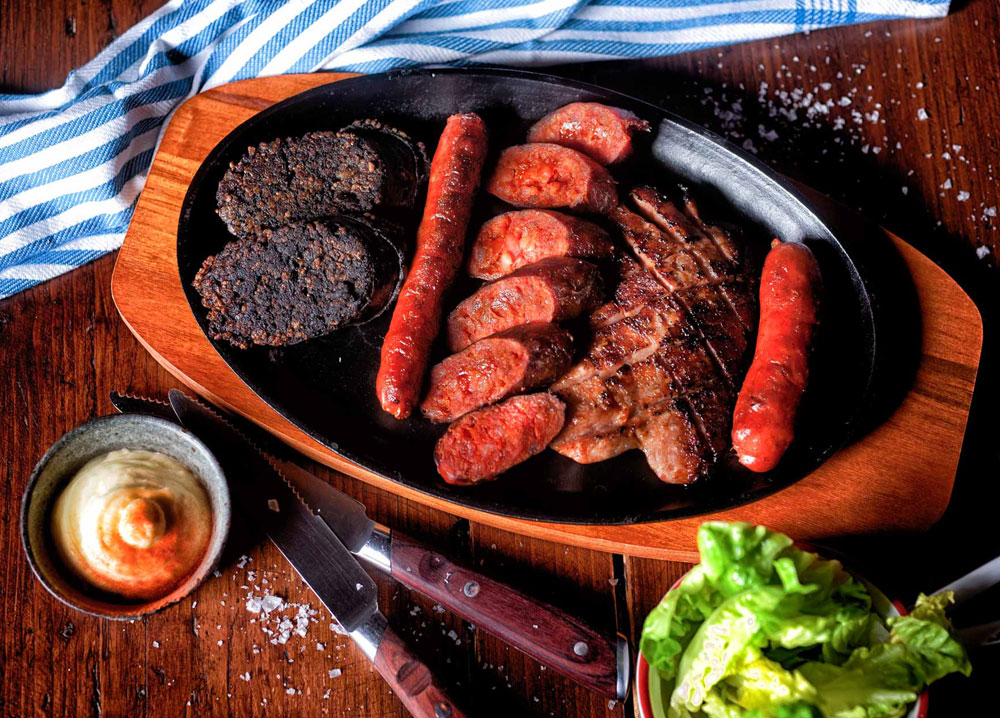Tapping into the Folklore of Spanish Tapas

It’s often said Spain is almost a country of countries, with such great diversity regionally – both in language and culture–but also in terms of scenery, atmosphere and of course, and perhaps most importantly to us, food.
Its tapas are a wonderful and eclectic representation of that diversity and the varying local flavours. The concept of tapas is thought to have started way back in the 13th century when taverns were required to serve alcohol with food. The ‘tapa’ (meaning lid) was the small plate or morsel used to cover the glass to keep the flies at bay and to keep the patrons from getting too inebriated. We have much to thank the forward thinking 13th century monarch who mandated that for if the story is true!
Now they’ve evolved into so much of a mainstay, Spain’s tourism agency has even sought to honour the humble tapas, declaring the third Thursday of every June World Tapas Day. For us, every day could be World Tapas Day, they’re so scrumptious! To help you pick your al’s from your con’s, we’ve listed our top choices of these savoury, spicy and sweet morsels. Remember they’re small in size, but big in flavour!
The Savoury Spicy
Savoury options, whose spiciness depend on the region and chilli quotient, start from the appetite-sating potato-based dishes through to the simplicity of single types of seafood drizzled in enhancing sauces and a bit of everything in between.

Potato-based Tapas
Choices of potato-based tapas include papas arrugadasor papas on mojo, which are small potatoes which have been boiled then roasted potatoes and served with a delicious mojo sauce usually made of garlic, paprika, red pepper, olive oil and cumin.
If fried is more your style, look out for the patatas bravasorpapas bravas, consisting of fried potato dice served with salsa brava (a spicy tomato sauce) and aioli.
Another hero of the potato variety is tortilla de patatas; an omelette made with potatoes and onions which is one of the most commonly served dishes in Spain (it’s even called the Spanish omelette sometimes, which is a pretty clear indication of how popular it is!).

Seafood Tapas
Spain is renowned for its fresh seafood, and these are extremely well represented in tapas menus, especially in coastal regions. If you’re a seafood lover, here are a few terms you may well want to become acquainted with. Gambas, the humble prawn, can be adorned al ajillo – in olive oil, garlic and chilli peppers, in salsa negra(with peppercorn sauce), or pil-pil with chopped chilli peppers. If you prefer yours whole, unpeeled and with the heads on, then a la planchais the style for you.
Gildas, which actually mean lollipop, are usually a sophisticated assembly of an anchovy, an olive and a Spanish chilli pepper.Boquerones(anchovies) can also come served in vinegar or deep fried.
Another winner is deep-fried (or grilled) dish baby squid, known as chipirones, often accompanied by a simple salad. Delicioso!
Then you have Calamares a la romanaor rabas– delicious little battered and fried calamari rings, served with aioli or a wedge of lemon.
Not to be mistaken calamari or squid, finally there’s octopus, or pulpo, like the tender pulpo a la gallega, Galician style boiled octopus served in hot olive oil and flavoured with paprika.

For The Meat Eaters
As expected, meat options abound too. Well-known Spanish tapas meat heroes include chorizo (like chorizo a la sidra – chorizo sausage slowly cooked in cider) and the exceptional jamonvarieties, which make prosciutto and pancetta seem like the poor cousin next door.
There’s perennial favourite, albondigas, which are meatballs, usually loaded with pork or beef to stave off hunger and drizzled in a tomato or garlicky sauce. For something a tad more sophisticated, try solomillo al whisky. Hailing from Seville, this is typically pork medallions marinated in whisky and fried in olive oil, while solomillo a la castellanais topped with onion or cabrales a cheese sauce.
Looking for something more exotic? Then try the Moorish inspired taste-sensation of pinchomoruno(kebab with spicy meat, usually pork, lamb or chicken).
Still not sated?
Try the filling croquetas(croquettes) which are commonly served in bars throughout Spain, sometimes with an accompanying salad. Or for a little hit of flavour, pimientos de Padron – small peppers fried in oil and salted, from Galicia in northern Spain.

The Sweet
There are a few sweet options out there if you’re craving a desert style tapa. Our favourite is queso con membrillo, which is manchego cheese with quince paste, vanilla, lemon and sugar. What a wonderful way to end a delicious taste sensation!
If you’d hungry for Spain, give our team a call….
If you’d like more information regarding Food Tours, please don’t hesitate to contact our team on 1800 242 353.
